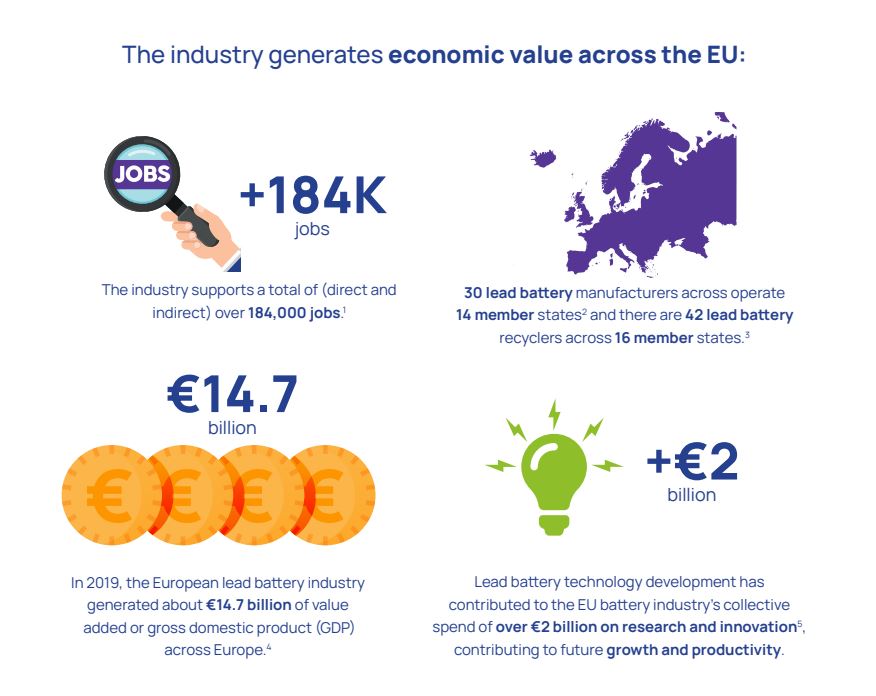Publication
12 April 2022
Socio-Economic Impact Study: the economic contribution of Europe’s innovative, low carbon lead battery industry
EUROBAT and the International Lead Association (ILA) commissioned consultancy firm EBP, specialised in state-of-the-art economic analysis and research, to produce a new report on the contribution of Europe's lead battery industry to the continent's econonmy.
Europe’s lead battery industry makes indeed a significant contribution to the continent’s economy, as well as to society’s decarbonization process. It is one of the industries that will assist in realizing the EU Green Deal, laying the foundation for a Zero Emission economy by 2050.(1)
But first and foremost, the industry generates economic impacts that affect numerous industry sectors. It contributes to the economy in the following ways:
• Battery manufacturing, recycling, and mining companies employ workers and generate business income. These represent direct effects and are referred to as the “European lead battery industry.”
• Battery manufacturing, recycling, and mining companies purchase goods and service from other companies. These represent indirect effects.
• Workers at battery manufacturing, recycling, and mining companies, as well as workers at supplier companies, spend their after-tax income on consumer goods. These represent induced effects.
• The lead battery industry supports small and medium enterprises (SMEs). Thirty-five percent of companies are medium enterprises and 4 percent are small enterprises.(2)
• Lead battery companies innovate through ongoing research and development. Industrywide, companies report spending nearly 40 million EUR on R&D annually. This spending contributes to the industry’s future growth and productivity.
• The industry uses high levels of recycled content. According to survey respondents, over 60 percent of the inputs to production come from recycled content. Other sources report that the recycled content in a new lead battery ranges from 67-80%.(3)
• The downstream industry activity enabled through usage of lead batteries is extensive: €7.3 trillion worth of GDP covering retail, construction, and healthcare applications.
• Approximately €2 billion of EU-27 country exports of lead-acid batteries are consumed by
non-EU countries such as the United Kingdom, United States, Russia, Switzerland, and China.
1 Charge the Future, https://chargethefuture.org/.
2 The European Commission defines medium enterprises as having fewer than 250 employees. It defines small enterprises as
having fewer than 50 employees. See https://ec.europa.eu/growth/smes/sme-definition_en.
3 European Commission, “Assessment of Options to Improve Particular Aspects of the EU Regulatory Framework on Batteries,”
2020, https://bit.ly/3AaP1ZB. Charge the Future, “Setting the standard for Europe’s circular economy,” 2019,
